Are you excited for spring? There are buds everywhere, and I am going out to make a long overdue early prune of my forsythia bushes to bring inside for forcing. Did you know that Forsythia comes in other colors besides just yellow? You can look at your local nursery for white flowering forsythia and pink forsythia as well – they will be the closely related Abeliophyllum distichum (white) or the ‘roseum’ variety (pink). But if you are trying to amp up the early spring blooms, there are other options for early flowering shrubs you can add – read on for some ideas.
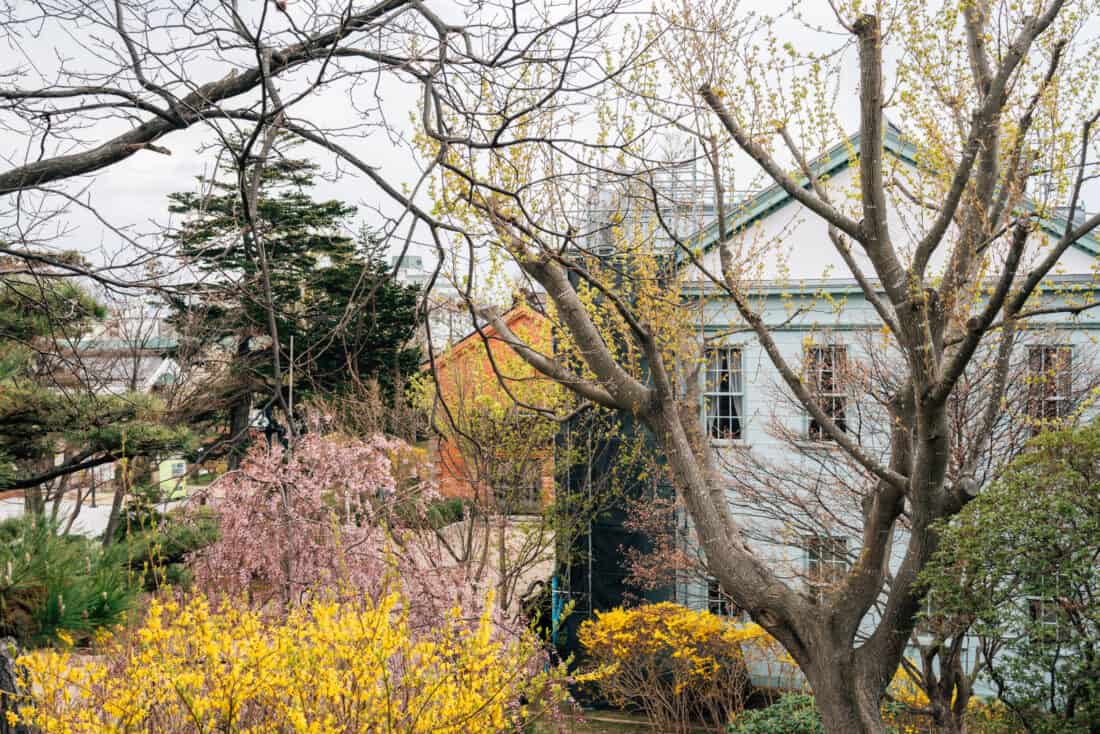
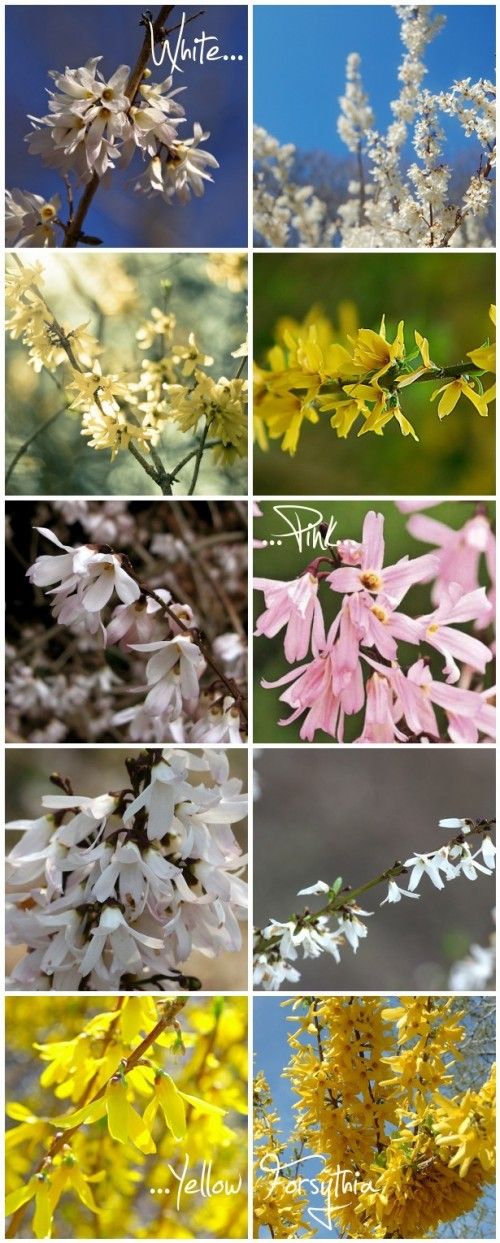
Forsythia colors typically range from vibrant yellow to golden tones. These cheerful flowers are known for their bright and sunny hues, but they also come in pink and white (and these varieties of blooms are known for arriving weeks earlier and for being more fragrant than the yellow varieties – making them a popular choice for springtime gardens and arrangements.
Image Credits:
1. Abeliophyllum distichum, 2. white forsythia, 3. Kiss me and you will see how important I am., 4. Farewell My Winter Suit, 5. Abeliophyllum distichum, 6. Pink Forsythia – Abeliophyllum distichum ‘Roseum’, 7. White/ Pink Forsythia Abeliophyllum distichum , 8. Abeliophyllum distichum , 9. Forsythia – Yellow Bells, 10. Yellow Forsythia
I have some forsythia that came with my garden (i.e., I didn’t plant it). It took me a few years to wrangle it into something that worked for me. Here is how I have transformed it from a wild and unkempt mess (as much as I love a wild plant, this was too much) into a sculpted shrub that is an architectural feature of my garden.
How to Prune Forsythia Hard (Pinching vs Cutting)
Forsythia is a tough and vigorous plant that can take a very hard prune. It also throws new shoots out from low in the shrub or just under ground level. You can cut old wood (anything over a year old) freely. Trust that in a couple of years, branches will have been fully replaced with fresher stems.
Also, If you are diligent you can avoid the saws and lopping tools by practicing pinching. Pinching is the practice of rubbing out unwanted new growth when it is young and easy to remove with just your fingers. When a bud breaks it makes a stem with leaves on it. You can wait until it is tough and woody (and if you cut it back it will induce branching), or you can pinch it when it is young and fresh for the same effect.
The advantage of pinching is more than just saving the tools for bigger jobs. It also does not leave stub of a scar on the plant and it is something you can do casually as you are enjoying your garden.
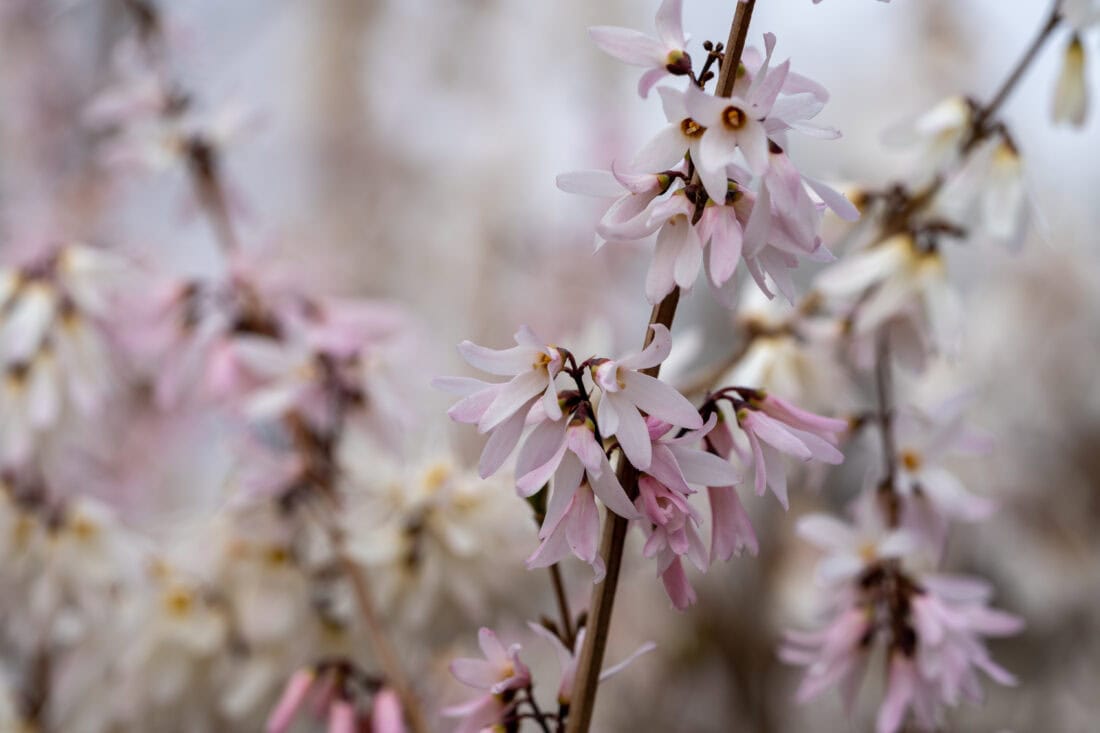
Laying (or layering) Forsythia Branches to create a hedge.
My forsythia were wild shrubs, planted haphazardly. Over the years, I have used a technique called laying (or layering) to make new shrubs and fill in the blank areas between shrubs so that now I have an actual hedge.
Laying is simple. Take a malleable branch and lay it on the ground (without breaking it from the main plant). You can hold it to the ground with a rock or even bury it a little. This will cause the stem to grow roots from the place where the plant is in contact with the dirt. After a season or two, you will have a viable new plant that can be severed from the original shrub by cutting the laid branch.
This can be done with various woody shrubs and is an easy and passive way to fill in a hedge or make baby shrubs that can be transplanted elsewhere.
If you have an old shrub, feel free to prune out as much as half the branches (and at least 1/3). Encourage the ground-level growth and pinch the new branches to force branching as they grow. With regular attention you can transform a wild and unrully shrub into one that is full and beautiful from top to bottom.
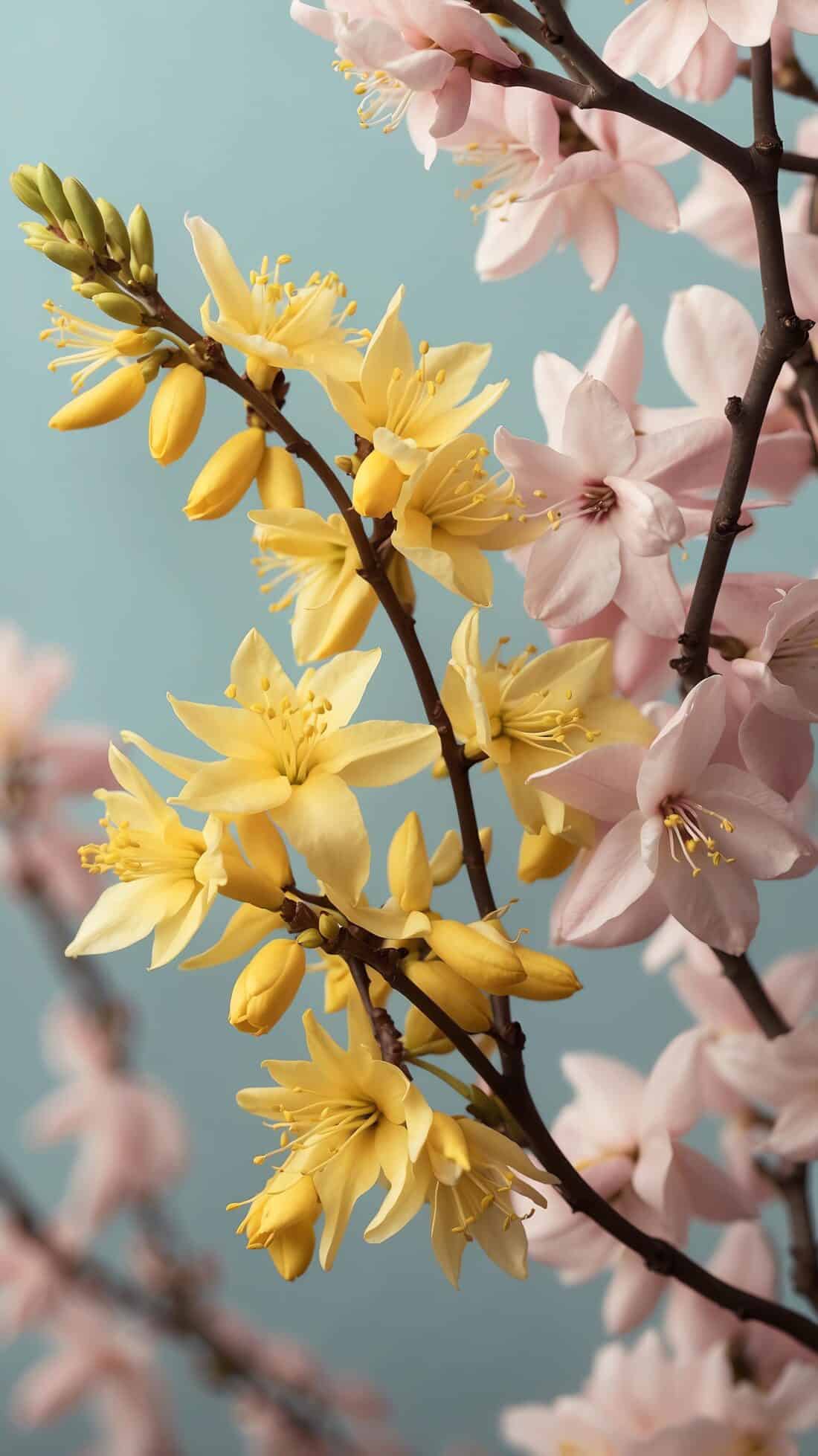
Types of forsythia (Pink, White and Yellow)
The most common types of forsythia are the spring-blooming yellow varieties (forsythia x intermedia). They are not native to any part of North America, but they are prolific. (in some places, they have escaped to the wild and are considered invasive).
The white forsythia (Abeliophyllum distichum) and pink forsythia (Abeliophyllum distichum ‘Roseum’) varieties are much less common and harder to find. These varieties are known for being smaller plants, blooming as much as two weeks earlier than the yellow forsythia, and they have a notable and pleasant fragrance that forsythia intermedia lacks.
Newer varieties of yellow forsythia have been bred for size (dwarf varieties), bloom size (bigger and more prolific), color, and improved habit.
When do forsythia bloom in zone 5?
I live in New England (zone 5/ 6) and my forsythia blooms in mid-April. It will come on a little later in lower growing zones and earlier in higher growing zones.
Alternatives to Forsythia (including Native shrubs)
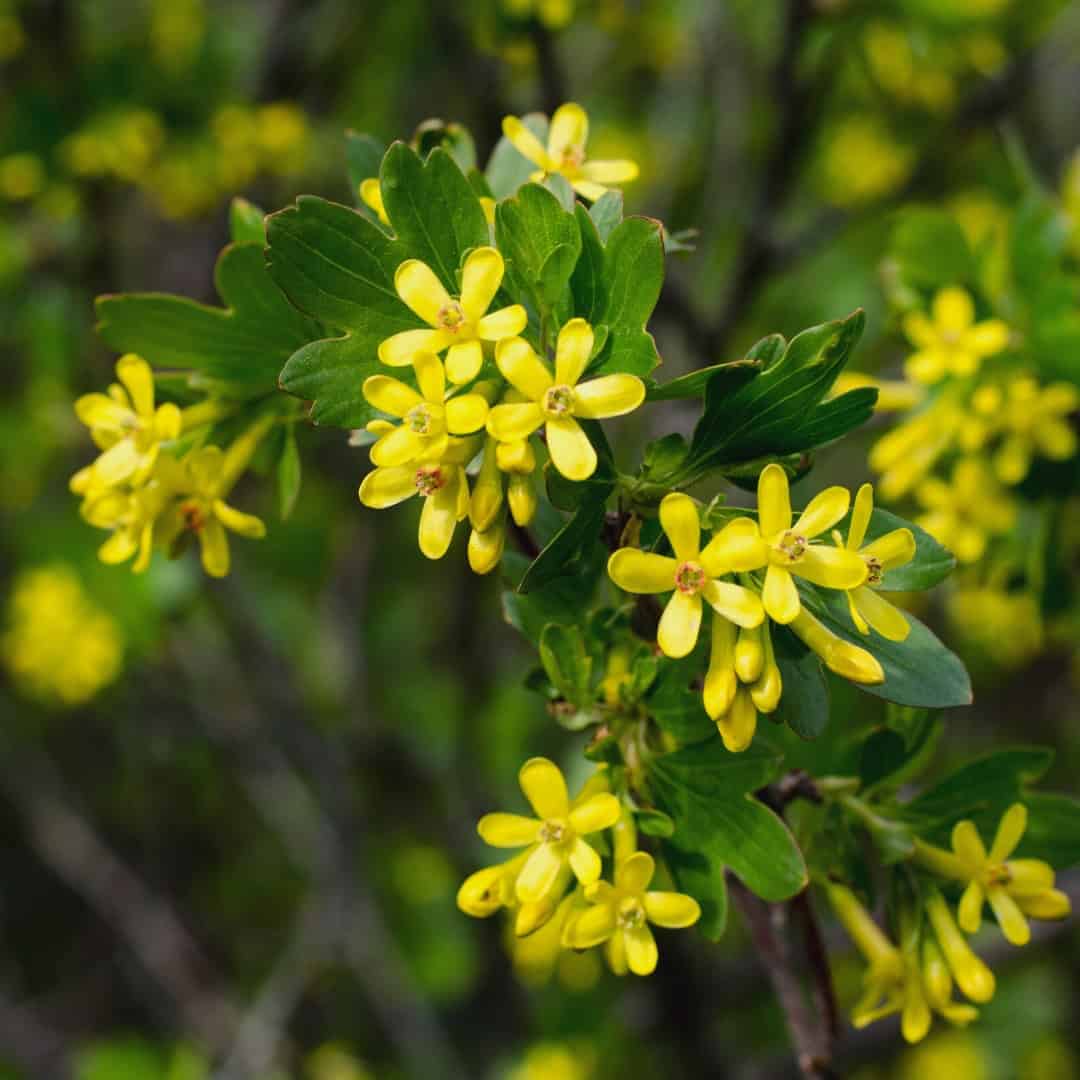
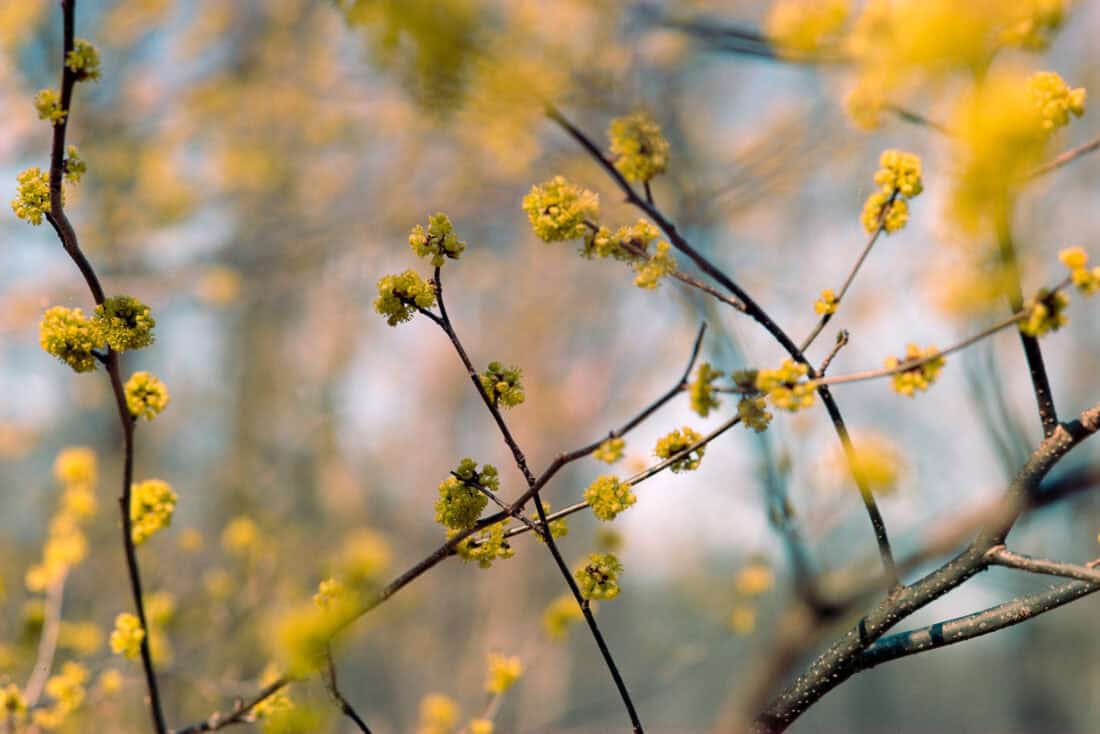
Native Yellow Flowering Spring Bloomers
Lindera benzoin (Spicebush)
This native shrub is a broad, rounded multi-stemmed shrub. The early spring flowers open on bare branches, are fragrant, and cover the shrub. The aromatic light green leaves turn deep yellow-gold in fall when it is just as eye-catching as it is in the spring. The female plants bear small, brilliant red fruits that support many birds. (read more about Lindera)
Ribes odoratum (Golden Currant; Clove Currant)
Ribes (in the current family) is another berry-producing native shrub. It is thornless and loosely branched. It has an arching vase shape and blue-green leaves that turn yellow in fall. The spring flowers are very fragrant (they smell like cloves), and they give way to blackberries in June – August. Other varieties of ribes bloom in pink, and it might also be a good option if you can source a pink forsythia bush.
You might also be interested in this Ribes-related post:
Elegant Spring Shrubs with Yellow Flowers (not native)
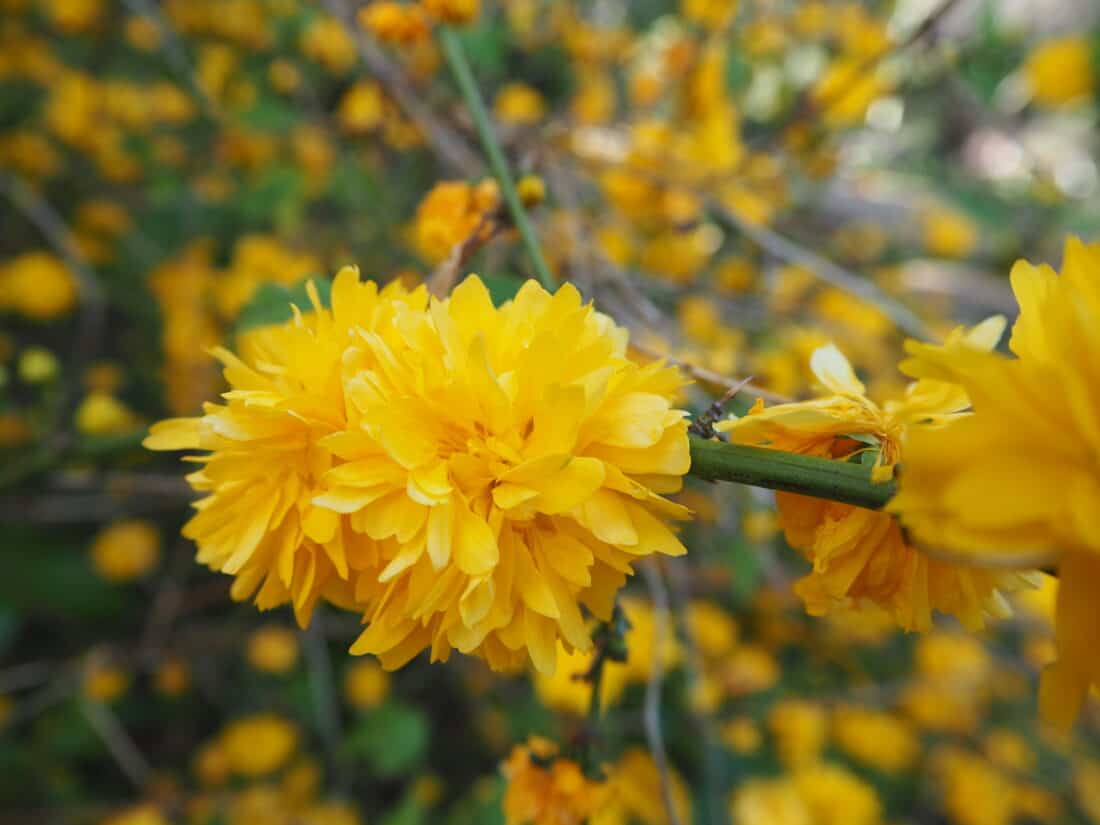
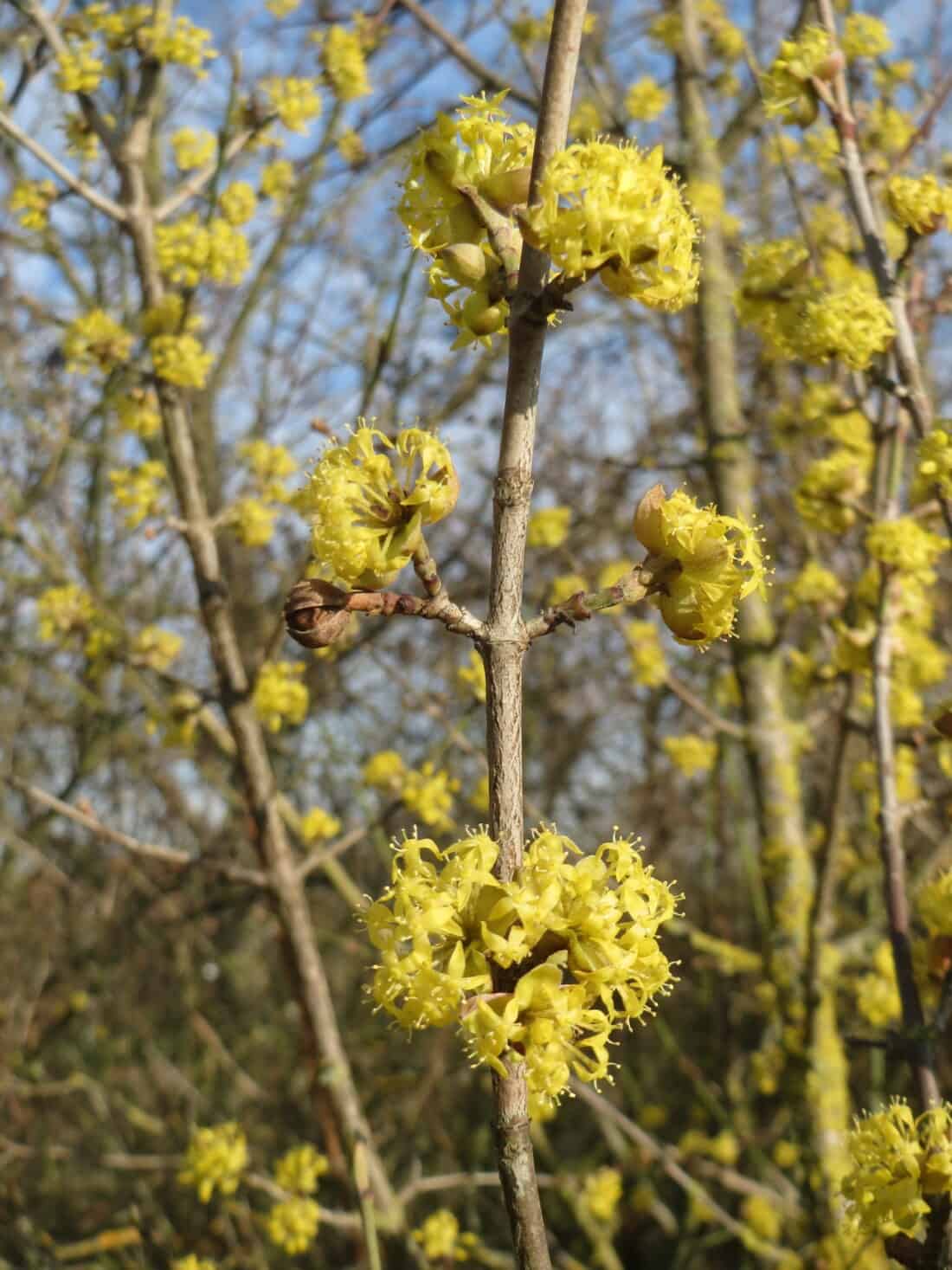
Cornus Mas (Cornelian Cherry)
A fantastic all-season interest shrub (or small tree). In addition to the yellow flowers in spring, it also bears pretty red fruits, has dark purple fall foliage in the autumn, and an interesting shedding bark for winter interest.
for more about Cornus mas see: Cornus Mas – A Must Have Plant for the Cutting Garden Border
Kerria Japonica
This unique shrub always catches my eye when I see it in someone’s yard. It is an unexpected shade of dark yellow, and the rose-like flowers cover the stems at a time of year when you really don’t expect to see rose-like deep yellow flowers.
You can prune forsythia very hard right after flowering — one thing I like is to cut it back almost to the ground after flowering — this forces out lots of long, long branches which look incredibly elegant and graceful in a vase next spring!
thanks for posting this. i love the concept of forsythia, but always hated the bright yellow against a dull brown and grey landscape of early spring. never sat right with me. knowing now that i could mix in some pink, makes the yellow just a bit more tolerable.